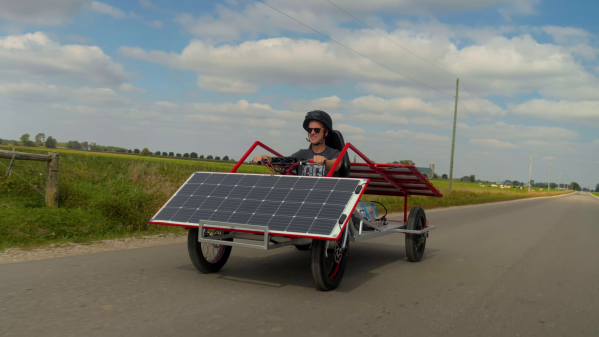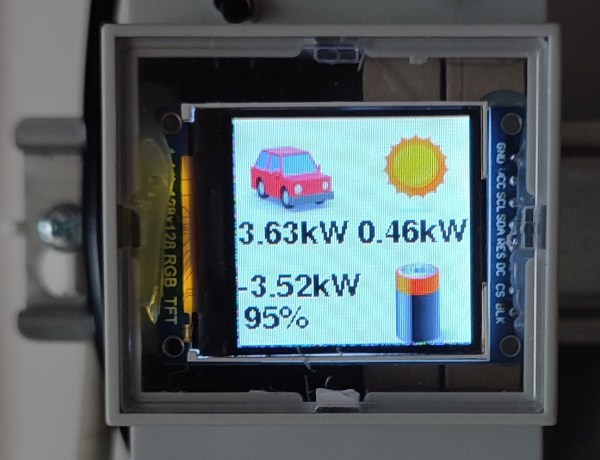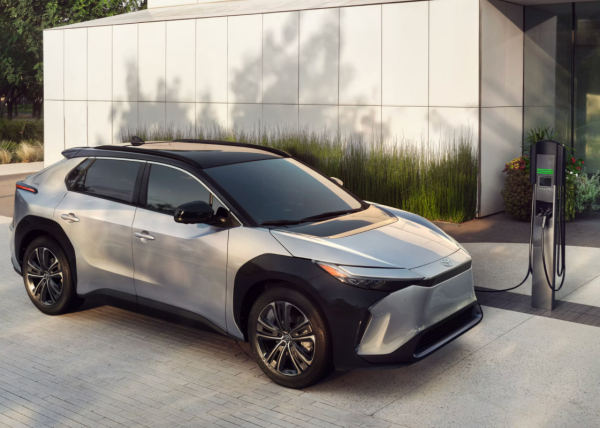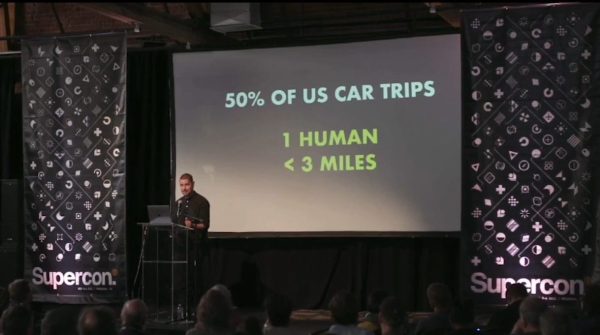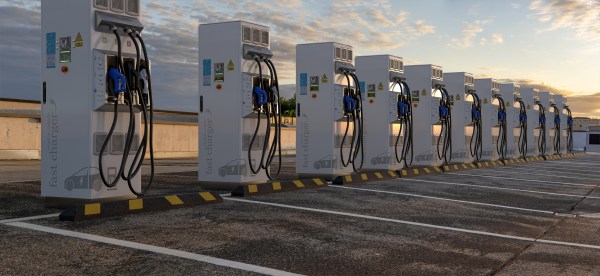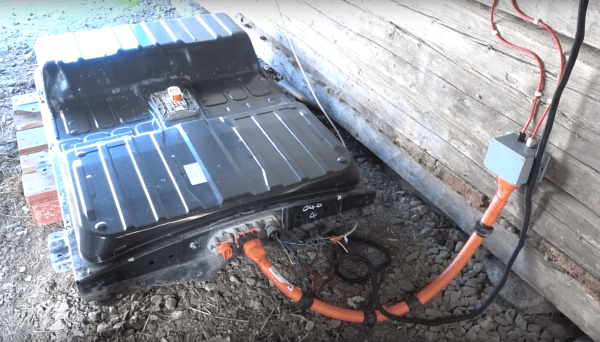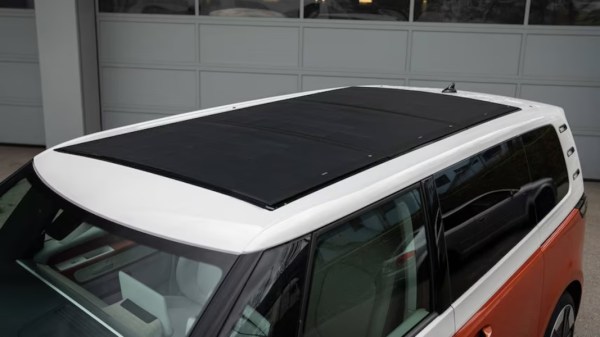There is something to be said for a vehicle that gains range just by standing outside in the sun. In the video after the break, [Drew Builds Stuff] demonstrates how he turned a pair of bicycles into a solar-powered vehicle.
The inspiration for this build started with a pair of 20″ steel framed fat tire bikes [Drew] picked up in a liquidation sale. He welded up a simple steel chassis, and attached the partial bicycle frame and forks to the chassis, using them as steerable front wheels. A short arm was welded to each of the fork, linking them together with threaded rods and rod ends that connect to centrally mounted handlebars. The rear driving wheels are from a 20″ e-bike conversion kit, with the disk brake assembly from the cannibalized bikes.
The solar part of this build comes in the form of three 175W flexible solar panels mounted on cedar frames, coming in at 10 lbs per mounted panel. [Drew] considered using conventional rigid solar panels, but they would have been 4-6 times heavier. The two panels mounted to the rear of the vehicle are on a hinged frame to allow easy access to the electronics below. Battery storage is made up of two 24V 100Ah batteries wired in series, connected to a 60A solar charge controller and the e-bike motor controllers.
The vehicle has a top speed of about 45km/h and 100km range on batteries alone. It might not be fast or engineered for maximum efficiency, but it looks like a ton of fun and relatively simple to build. As [Drew] says, it’s not a how-to for building a perfect solar-powered vehicle, it’s how he built one.

